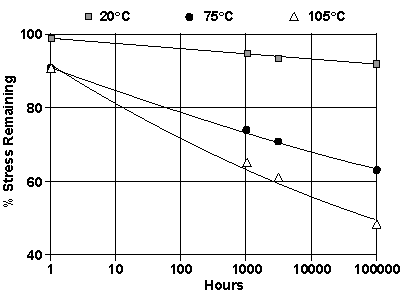There are several kinds of equipment and several methods used to determine the stress relaxation of metals. An excellent reference is "ASTM E 328, Standard Methods for Stress Relaxation Tests for Materials and Structures", published by the American Society for Testing and Materials. Of particular note is that this standard includes bending test methods and most contact springs in connectors are stressed in bending.
The data from stress relaxation tests may be treated in different ways. For example, to estimate the amount of stress relaxation for a long time, short time tests may be extrapolated (rather than use tests extending over a significant percentage of design life). Also, techniques are used to estimate stress relaxation at temperatures different than at the test temperature. These techniques, which utilize the so-called Larson-Miller Parameters, are based on the fact that the % remaining stress in a metal under test tends to decrease in a linear fashion when plotted against time on a logarithmic scale. An example of such a plot for cartridge brass is shown in the accompanying figure. If such curves are obtained at several temperatures it may be possible to obtain a reasonable interpolation to estimate behavior at an intermediate temperature. When metals are selected for applications where stress relaxation is of concern, it is best to compare data that has been obtained with the same kind of equipment and test method.
 Figure 1. Stress Relaxation of Cartridge Brass at Several Test Temperatures
Figure 1. Stress Relaxation of Cartridge Brass at Several Test Temperatures